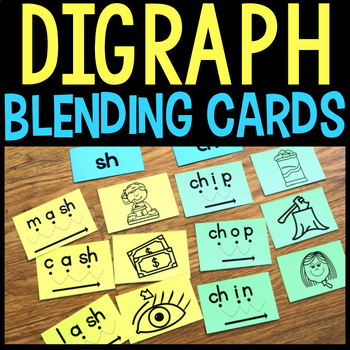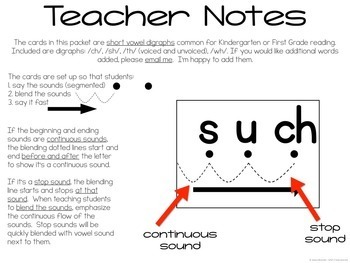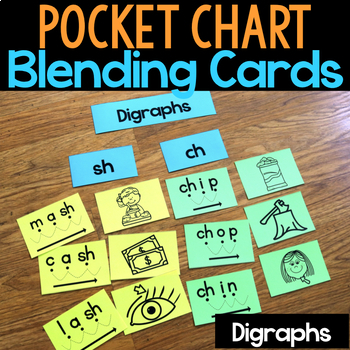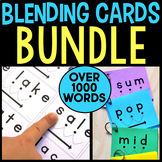Digraph Blending Cards Consonant Digraph Segmenting Activities SH, CH, TH, CK
- PDF
What educators are saying
Also included in
- Looking for a great phonics tool for your students learning to read by blending and segmenting words by phonics patterns, including continuous blending? These Blending Cards help students segment, blend, and read words in various phonics patterns. These blending cards align with the Science of ReadPrice $37.00Original Price $70.85Save $33.85
Description
The Digraph Blending and Segmenting Cards with Images provide an engaging way to practice blending, segmenting, and reading digraphs. This set of blending cards helps children easily identify the sounds associated with each digraph, providing a fun and effective learning experience. Improve your students' reading fluency in no time with these cards! The cards can be used for instruction for kindergarten and first grade and RtI for first and second grade.
Includes full-page blending cards, cards that are sized for pocket charts and images for most of the words!
The cards are set up so that students:
- Segment the sounds • • • (with the large dots)
- Blend the sounds (with the dotted lines)
- Read it fast (with the arrow)
Distance Learning
- Google Slides™️ with the blending cards and interactive image reveal for each word (56 slides)
The dotted lines indicate which sounds are continuous sounds and which are stop sounds. Continuous sounds have dotted lines before and after the sound to show that it continues. Stop sounds stop at the letter.
Pocket Chart Blending Cards
Includes pocket chart blending cards. Each card measures approximately 2.5” tall, which is perfect for most pocket charts. All images are in black and white so that they can easily be printed on colored paper to differentiate the phonics patterns.
Most images are the same images used in my phonics worksheets. Students will be able to work with the cards in a literacy center, sorting words and/or images AND they will be able to work with the SAME images on the phonics worksheets.
The spacing of the letters of the digraphs are closer together than the other letters, indicating that the two letters make one sound together.
For more information on printing the blending cards, see this blog post
For more information about the blending cards, see this blog post
Also Available
- Blending Cards BUNDLE
- Short Vowel CVC Words
- Nonsense CVC Words
- Decodable Sight Words
- R Blends for Short Vowels
- S Blends & Clusters for Short Vowels
- L Blends & Clusters & tw, the, qu
- Final Blends & Clusters
- VCE Words
- Long & Other Vowel Digraphs
The cards are created full page for whole group, but can be printed 1/4 page for small groups. The image above is printed 1/4 page and has a five-year-old's hands. The cards are low ink, all black and white, for easy printing and copying.
Also available are CVC Phonics Worksheets that include blending cues. There are 18 worksheet templates with over 140 worksheets per vowel.
See the preview for additional information and a list of words. If you would like additional words, please let me know.
CLICK HERE TO FOLLOW ME ON TPT | CLICK HERE TO CHOOSE A FREE RESOURCE
TERMS OF USE
Copyright © What I Have Learned, Jessica Boschen
Permission to copy for single classroom or homeschool family use only.
This product may not be distributed or displayed digitally for public view.
Please purchase additional licenses if you intend to share this product.






